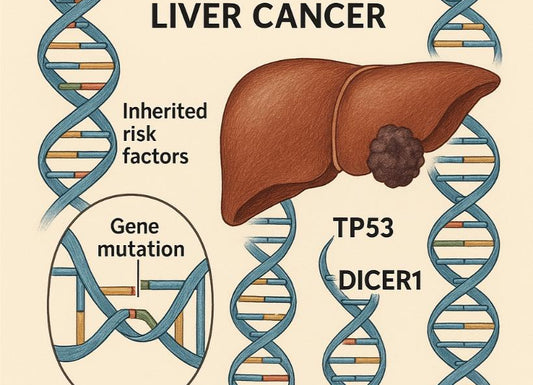Top 10 Drugs That Cause Kidney Damage
 Written By
Blen Shumiye, MD
Written By
Blen Shumiye, MD

If you take prescription or over-the-counter medication for pain, blood pressure, or infection, you may think mostly about how those drugs help you feel better. But have you ever wondered how they affect your kidneys?
Your kidneys are remarkable filters. They remove waste, balance electrolytes, and keep your blood clean. Yet certain medications can put them under stress—especially when taken for long periods, in high doses, or together with other kidney-affecting drugs.
This guide explains the top 10 drugs known to cause kidney damage, how they work, who’s most at risk, and what you can do to stay safe while managing your health.
What Is Drug-Induced Kidney Damage?
When a medication injures the kidneys, it’s called drug-induced nephrotoxicity. The damage can appear suddenly known as acute kidney injury (AKI) or develop slowly over time into chronic kidney disease (CKD).
Common mechanisms include:
-
Reduced kidney blood flow: Certain drugs constrict blood vessels feeding the kidneys.
-
Direct tubular injury: Some drugs damage the kidney’s filtering tubules.
-
Inflammation: Allergic or immune reactions can inflame kidney tissue.
-
Oxidative stress: Free radicals overwhelm kidney cells, leading to cell death.
-
Combination effects: Using multiple nephrotoxic drugs or having underlying illness multiplies risk.
Not everyone taking these medications will have kidney problems. The danger depends on dose, duration, hydration status, age, and pre-existing kidney or heart disease.
To learn how at-home tests can help you track your kidney function, read our Complete Guide to At-Home Kidney Function Tests
Who Is at Higher Risk?
You may be more likely to develop kidney injury from medications if you:
-
Are 60 or older
-
Have pre-existing kidney disease or reduced kidney function
-
Have heart failure, diabetes, liver disease, or hypertension
-
Are dehydrated (due to vomiting, diarrhea, or low fluid intake)
-
Take multiple kidney-stressing drugs at the same time
-
Have low blood pressure or poor kidney perfusion
Knowing your risk helps you and your doctor make safer choices—such as using smaller doses, choosing alternatives, and monitoring labs closely.
Top 10 Drugs / Drug Classes That Can Damage Kidneys

Here are ten medications or drug types that are well documented in the medical literature to cause kidney damage. For each, I describe what they are, how they harm the kidneys, risk factors, and what to watch out for.
1. Nonsteroidal Anti-Inflammatory Drugs (NSAIDs)
Examples: Ibuprofen, naproxen, diclofenac, celecoxib.
Used for: Pain, inflammation, arthritis, fever.
How They Harm Kidneys
NSAIDs block COX-1 and COX-2 enzymes that produce prostaglandins compounds that keep kidney blood vessels dilated. Without prostaglandins, vessels constrict, blood flow drops, and filtration slows. Prolonged or high-dose use can lead to acute kidney injury or chronic kidney disease.
Risk Factors
-
Dehydration
-
Older age
-
Use with diuretics or ACE inhibitors/ARBs
-
Pre-existing kidney disease
Warning Signs
-
Rising creatinine or BUN on blood tests
-
Swelling or fluid retention
-
Reduced urine output
-
Increased potassium
2. Aminoglycoside Antibiotics
Examples: Gentamicin, tobramycin, amikacin.
Used for: Serious bacterial infections (especially in hospitals).
How They Harm Kidneys
Aminoglycosides build up in proximal tubule cells, where they cause oxidative stress and direct cell death, resulting in acute tubular necrosis (ATN). Damage can occur within days of starting therapy.
Risk Factors
-
High or frequent doses
-
Prolonged treatment
-
Dehydration
-
Combination with other nephrotoxic drugs
Warning Signs
-
Elevated creatinine
-
Electrolyte imbalance
-
Trouble concentrating urine
-
Possible hearing loss (ototoxicity)
3. Cisplatin and Other Platinum-Based Chemotherapy Drugs
Examples: Cisplatin, carboplatin, oxaliplatin.
Used for: Various solid tumors.
How They Harm Kidneys
Cisplatin accumulates in tubular cells, causing DNA damage, oxidative stress, and inflammation. It reduces the kidney’s ability to filter blood and regulate electrolytes. Kidney toxicity is one of the most common dose-limiting side effects of cisplatin.
Risk Factors
-
High cumulative dose
-
Multiple treatment cycles
-
Dehydration
-
Existing kidney impairment
-
Combination with other nephrotoxins
Warning Signs
-
Increased creatinine
-
Low magnesium and potassium
-
Reduced urine output
-
Fatigue or swelling
4. Amphotericin B (Conventional Form)
Used for: Severe fungal infections.
How It Harms Kidneys
Amphotericin B causes blood vessel constriction in the kidneys and damages cell membranes in the tubules, leading to potassium and magnesium loss. Conventional forms are highly nephrotoxic, whereas lipid formulations are safer.
Risk Factors
-
High total dose
-
Dehydration
-
Concurrent kidney-toxic drugs
-
Older age or low kidney reserve
Warning Signs
-
Elevated creatinine
-
Electrolyte loss
-
Excessive urination
-
Persistent fatigue
5. Calcineurin Inhibitors (Tacrolimus, Cyclosporine)
Used for: Organ transplant, autoimmune diseases (e.g., lupus, psoriasis).
How They Harm Kidneys
These drugs constrict kidney arteries, reducing blood flow and causing ischemic damage. Long-term use can lead to fibrosis and chronic nephropathy. Monitoring blood drug levels is critical.
Risk Factors
-
High trough levels
-
Drug interactions (increase concentrations)
-
Low kidney perfusion
-
Long-term therapy
Warning Signs
-
Rising creatinine
-
High blood pressure
-
Low urine output
-
Protein in urine
6. Contrast Agents Used in Imaging Tests
Examples: Iodinated contrast (CT scans), gadolinium (MRI).
Used for: Enhancing diagnostic images.
How They Harm Kidneys
Contrast agents can trigger contrast-induced acute kidney injury (CI-AKI) by constricting kidney vessels and producing oxidative stress. Most cases occur within 1–2 days after exposure.
Risk Factors
-
Pre-existing CKD
-
Diabetes
-
Older age
-
Dehydration
-
High contrast dose
Warning Signs
-
Sudden increase in creatinine
-
Decreased urine output
-
Temporary kidney function decline
Prevention
Hydrate well before and after imaging, and ask about low- or iso-osmolar contrast if you have kidney disease.
7. Proton Pump Inhibitors (PPIs)
Examples: Omeprazole, esomeprazole, pantoprazole.
Used for: Acid reflux, GERD, peptic ulcers.
How They Harm Kidneys
Long-term PPI use has been linked to acute interstitial nephritis (AIN)—an immune-driven inflammation of kidney tissue. Repeated or unrecognized episodes may lead to chronic scarring and CKD.
Risk Factors
-
Long-term use
-
Older adults
-
Pre-existing kidney disease
Warning Signs
-
Gradual increase in creatinine
-
Fatigue
-
Rash or fever
-
Blood or protein in urine
8. Lithium
Used for: Bipolar disorder, mood stabilization.
How It Harms Kidneys
Lithium builds up in the kidneys over time, leading to nephrogenic diabetes insipidus (excessive urination and thirst) and chronic tubulointerstitial nephropathy. Some effects are irreversible with long-term use.
Risk Factors
-
Long duration of therapy
-
High doses
-
Dehydration
-
Age over 60
Warning Signs
-
Increased urination and thirst
-
Electrolyte imbalance
-
Gradual creatinine rise
Regular lithium level checks and kidney monitoring are essential.
9. ACE Inhibitors and ARBs (in Certain Conditions)
Examples: Lisinopril, ramipril (ACE inhibitors); losartan, valsartan (ARBs).
Used for: Hypertension, heart failure, kidney protection in diabetes.
How They Harm Kidneys
Usually protective, but under low-blood-flow conditions (e.g., dehydration or bilateral renal artery stenosis), they can cause a temporary GFR drop. By relaxing the kidney’s “exit” arteriole, filtration pressure falls too low.
Risk Factors
-
Narrowed renal arteries
-
Low perfusion or dehydration
-
Concurrent use with NSAIDs or diuretics
Warning Signs
-
Rise in creatinine after starting
-
High potassium
-
Reduced urine
Usually reversible when adjusted properly.
10. Other Antibiotics and Antivirals
Examples: Tenofovir (HIV), vancomycin, sulfonamides.
Used for: Bacterial or viral infections.
How They Harm Kidneys
Mechanisms vary: some cause crystal formation in tubules, others direct toxicity or inflammatory reactions. Tenofovir can cause proximal tubular damage leading to phosphate loss and bone problems.
Risk Factors
-
High or prolonged doses
-
Poor hydration
-
Co-use of multiple nephrotoxins
-
Pre-existing kidney issues
Warning Signs
-
Elevated creatinine
-
Protein or blood in urine
-
Electrolyte imbalance
How Doctors Detect Drug-Related Kidney Damage
Early detection is key. Your provider may order:
-
Blood tests: Rising creatinine or BUN, declining eGFR.
-
Electrolyte checks: Abnormal potassium, magnesium, calcium.
-
Urinalysis: Protein, blood, or crystals in urine.
-
Imaging or biopsy: To identify inflammation or scarring in chronic cases.
Symptoms like swelling, fatigue, or reduced urine often appear late—so lab monitoring is far more reliable for early warning.
If you’re also concerned about your liver while managing medications, check out our Comprehensive Guide to At-Home Liver Tests.
How to Protect Your Kidneys When Taking Medication
Here are proven, evidence-based strategies:
-
Discuss risks before starting new medications.
Ask if safer alternatives exist or if dosing can be adjusted. -
Stay hydrated.
Dehydration greatly increases the chance of kidney injury, especially with NSAIDs or contrast dyes. -
Use the lowest effective dose for the shortest time.
More exposure usually equals more risk. -
Monitor labs regularly.
Check creatinine, eGFR, and electrolytes when using potentially harmful drugs. -
Avoid drug combinations that double up on kidney stress.
For instance, NSAIDs + ACE inhibitors + diuretics = high-risk trio. -
Adjust doses in chronic kidney disease.
Many drugs require lower doses when kidney function declines. -
Consider safer formulations.
Lipid-based amphotericin B or different antibiotics may reduce harm. -
Report symptoms early.
Changes in urine, swelling, or fatigue deserve prompt evaluation.
Common Warning Signs of Possible Kidney Injury
Be alert to:
-
Swelling in feet, ankles, or hands
-
Unusual fatigue or confusion
-
Decreased or excessive urination
-
Foamy or dark urine
-
High blood pressure
-
Muscle cramps or irregular heartbeat
If you notice these symptoms—especially after starting or changing a medication—contact your healthcare provider immediately.
How Soon Can Kidney Damage Happen?
Timing varies by medication:
-
Hours to days: NSAIDs and contrast agents can cause rapid kidney blood flow changes.
-
Days to weeks: Aminoglycosides, cisplatin, and amphotericin B may show early lab changes.
-
Weeks to months: PPIs, lithium, and calcineurin inhibitors often cause gradual decline.
-
Months to years: Long-term use of nephrotoxic drugs can lead to chronic, irreversible damage.
When to Talk to Your Doctor

Contact your healthcare provider if you:
-
Start a new medication known to affect kidneys and develop swelling or urine changes
-
Have CKD, diabetes, or heart disease and are prescribed a high-risk drug
-
Undergo chemotherapy, antifungal therapy, or organ transplant treatment
-
Receive lab results showing rising creatinine or falling eGFR
Your provider can order kidney tests, review your medication list, and adjust therapy before damage becomes permanent.
The Bottom Line
Your kidneys work silently but tirelessly to keep your body balanced. While many medications can be lifesaving, some can also stress or harm these vital organs.
The goal isn’t to avoid needed treatments, it's to use them safely and smartly. By staying informed, maintaining hydration, and monitoring kidney function, you can minimize risk and protect long-term kidney health.
Talk openly with your healthcare provider before starting or stopping any medication, and remember: early detection and prevention are the best ways to keep your kidneys strong for life.
Monitor Your Kidney Health at Home
You can take an at-home kidney function test through Ribbon Checkup and receive your results within days.
References
Cassata, C. (2023, April 6). These Common Medications May be Damaging Your Kidneys. Healthline; Healthline Media. https://www.healthline.com/health-news/common-medications-can-damage-kidneys#Who-s-at-the-highest-risk-of-kidney-damage-from-medication
Medicines That Can Cause Acute Kidney Injury. (2025). Alberta.ca. https://myhealth.alberta.ca/Health/pages/conditions.aspx?hwid=tv7198#:~:text=Acute%20Kidney%20Injury-,Overview,One%20example%20is%20cimetidine.
Rowe, B. (2023, May 5). Top 10 Drugs That Cause Kidney Damage. Lakeview Health. https://www.lakeviewhealth.com/blog/top-10-drugs-that-cause-kidney-damage/#:~:text=7)%20Iron%20Supplements:,10)%20Laxatives:
Safe Medicine Use with Chronic Kidney Disease. (2025, October 17). National Kidney Foundation. https://www.kidney.org/kidney-topics/safe-medicine-use-chronic-kidney-disease
Shirali, A., & Pazhayattil, G. S. (2014). Drug-induced impairment of renal function. International Journal of Nephrology and Renovascular Disease, 457. https://doi.org/10.2147/ijnrd.s39747

Dr. Blen is a seasoned medical writer and General Practitioner with over five years of clinical experience. She blends deep medical expertise with a gift for clear, compassionate communication to create evidence-based content that informs and empowers. Her work spans clinical research, patient education, and health journalism, establishing her as a trusted voice in both professional and public health spheres.



